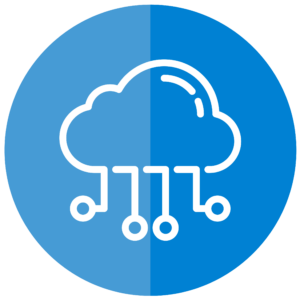The place of DevSecOps in software development today
In the enterprise heavyweight world of custom software development, where velocity and modernism rule the day, a silent guardian now stands vigilant to shield new solutions from the dangers of the digital wild west: DevSecOps. Picture your team of developers who are just about to release an app. Now imagine there is a major security vulnerability found well into the development cycle. On what cost? Deferred releases, nervous shareholders, and reputations on the line. That’s where DevSecOps comes in, integrating security considerations smoothly into the software development life cycle to build resilient, secure, performant applications. DevSecOps is more than a methodology for the software development managers at the startup companies, more than a book or some estimate stamper – it’s something more that she can use to make sure that her team is submitting as secure code as possible and not giving it up to speed.
DevSecOps Just like any new methodology, the Agile way of designing and development for security has not always been appreciated, and there have been resistance and skepticism towards it initially.
Once upon a time, software development was a straight path, a linear progression where security was an afterthought, typically the responsibility of some other team in the eleventh hour. This approach frequently resulted in bottlenecks, redo and security holes that could be targeted by hackers. The rise of DevOps With the advent of DevOps, the evolutionary change which forever changed the way we approach software, and got development and operations working closely, CI and CD emerged. But with cyber threats increasing beyond our wildest dreams, a more sophisticated way of working was required – one that will embed Fortify DevOps Countermeasures hardwired into the process.
- DevSecOps is an evolution of DevOps, and like DevOps, it integrates security practices throughout the software development lifecycle. It becomes a change that drives developers, operations and security as one cohesive force. People, whose startup is scaling quickly and being targeted by an ever-growing number of cybercriminals Instantaneously adopting DevSecOps Best Practices so that her team can push product more rapidly while knowing their apps are defense-ready.
- Why DevSecOps is Important: There’s a Lot on the Line
- In a digital context, one break in the security chain can cost millions and lose your customer’s trust. The risk of data breach is too great and by 2023, the average data breach cost will have risen to $4.45 million, a number that would keep any business person up at night. DevOps Security addresses this issue by ‘baking in’ security controls early and often, moving the debate from cost into value. With a bit of Security in Agile Development, any team can keep pace with their sprint velocity, all the while keeping their code safe from the bad people.
- The advantages of DevSecOps are incredible. Let us understand them:
- Increased Velocity: Teams will also realize their inner continuous security checks allowing them to practice DevOps at the speed of light without compromising on safety. The Security Professional’s Other ResponsibilitiesReduced Costs: Identifying and correcting software vulnerabilities early in the life cycle is certainly less expensive than finding and fixing vulnerabilities after the code has been deployed.
- Great Collaboration: DevSecOps fosters a culture of security is everyone’s responsibility and unites team over organizational silos.
- Increased Security Posture - Ongoing monitoring and testing ensures application security against future threats.
The Pillars of DevSecOps: A Story of Integration
Let’s follow a team as they start on a new project: a customer-facing mobile app. In the previous section, security was an afterthought, leading to chaotic last-minute corrections. Now, with DevSecOps, the journey is quite unique.
1. Shift-Left Security: Finding Bugs Early
There’s a company, its team is practicing Shift-Left Security—core principles of DevSecOps Best Practices. Sure, this sounds a bit like programming on steroids, why to protect from something that might not happen, lets look at more on the strategy I call vaccine development and importantly when to apply this. Using tools such as static application security testing (SAST) during coding, developers capture and fix issues before they move on to the next step. This will save time and avoid potential security incident to keep CI/CD pipeline security unviolated.
2. Security Automation in Devops: Unified Protection offloading delays to fill up the next available slot.
Hand searches are a legacy of the past. In other words, Security Automation in DevOps involves tools scanning, testing, and monitoring for code, consistently. The dev team implement DevSecOps Tools such as Snyk, OWASP, ZAP, and Checkmarx into their CI/CD pipeline. These tools do crawl check for security holes, config errors, compliance issues and feedback in real time and let us focus in resolution. DevOps Security Automation is the Savior and It Can Also Boost Trust of Company into the Process.
3. CI/CD pipeline security: The gates are guarded
The CI/CD pipeline is the foundation of modern software delivery but it is also a prime target for attackers. CI/CD Pipeline security also means securing all the four stages—build, test, deploy, and monitor. In the deployment phase, we found that there was a set up container image that was a false positive from open source security scanner, which helped us to block a v4 exploit. This helps us realize the significance of CI/CD security and reinforces the team’s dedication to DevSecOps Practices.
4. Securing Agile Development: A Change of Culture
Agile teams move fast and iterate, but building without security is building on a shaky foundation. Security in Agile Development is that security features are incorporated in every sprint. Sarah’s product ownership team puts security in its backlog as user stories that are just as important to accomplish as new features. They add time to update and dependencies and do threat modeling to make sure security is never overlooked.
This cultural reset is the key change to make this happen, where Sarah’s team becomes the security advocates, and DevOps Security is owned by everyone. It’s quite a change from the old days, when security was someone else’s problem.
DevSecOps Tools: Weapons of Mass Success
To put DevSecOps into action, Sarah and her team use their own box of some of the best DevSecOps Tools:
- Snyk: Vulnerability scanning for your open source dependencies – keep your libraries secure.
- OWASP ZAP: DAST tool to find runtime problems.
- Checkmarx: Offers full SAST for identifying vulnerabilities inside the code.
- Aqua Security: Container and cloudbased app security, vital for Sarah’s microservices architecture.
- HashiCorp Vault: Maintain secrets and credentials to shield sensitive data in the pipeline. With these tools in place, Sarah’s team were able to automate Security in Agile Development, automate and optimize CI/CD pipeline security, and enforce Shift-Left Security best practices. The result? That you have built and scaled a vibrant and reliable software development process.
Practical Next Steps to Bring DevSecOps to Your Organization
For Sarah, and other software development managers wishing to adopt DevSecOps, here’s a path to victory:
- Train Your Team: Give workshops that create a culture of security. Shift DevOps Security to become a shared responsibility.
- Build in Security Early: Implement Shift-Left Security to add SAST/DAST to your development process.
- Automate Everything: Use Security Automation in DevOps to eliminate manual work and identify problems on the fly.
- Lock Down the Pipeline: Add gates to your CI/CD pipeline for automation of security compliance checks.
- Pick the Right Tools: Invest in DevSecOps Tools, which are suitable to your tech stack and compliance requirements Need.
- Keep watch: Observe and respond to threats as they happen with monitoring software solutions.
- Iterate and Refine: Continuously iterate through your DevSecOps Best Practices as you learn and new threats emerge.
By doing this, Sarah’s team not only provide secure software but also maintain a competitive advantage in the marketplace.
Take Action: Adopt DevSecOps Now
With respect to companies/firms, it is not only a practice, but a power which lets them innovate in strategic way without fear of any security breach. Inculcating DevOps Security into the software development process lets the team provide a high-quality app, maintains it secure which in turn gains customer’s trust and repels attackers. Here are some we can think of: Faster uptime, lower price, increased security.
Contact Us Today













